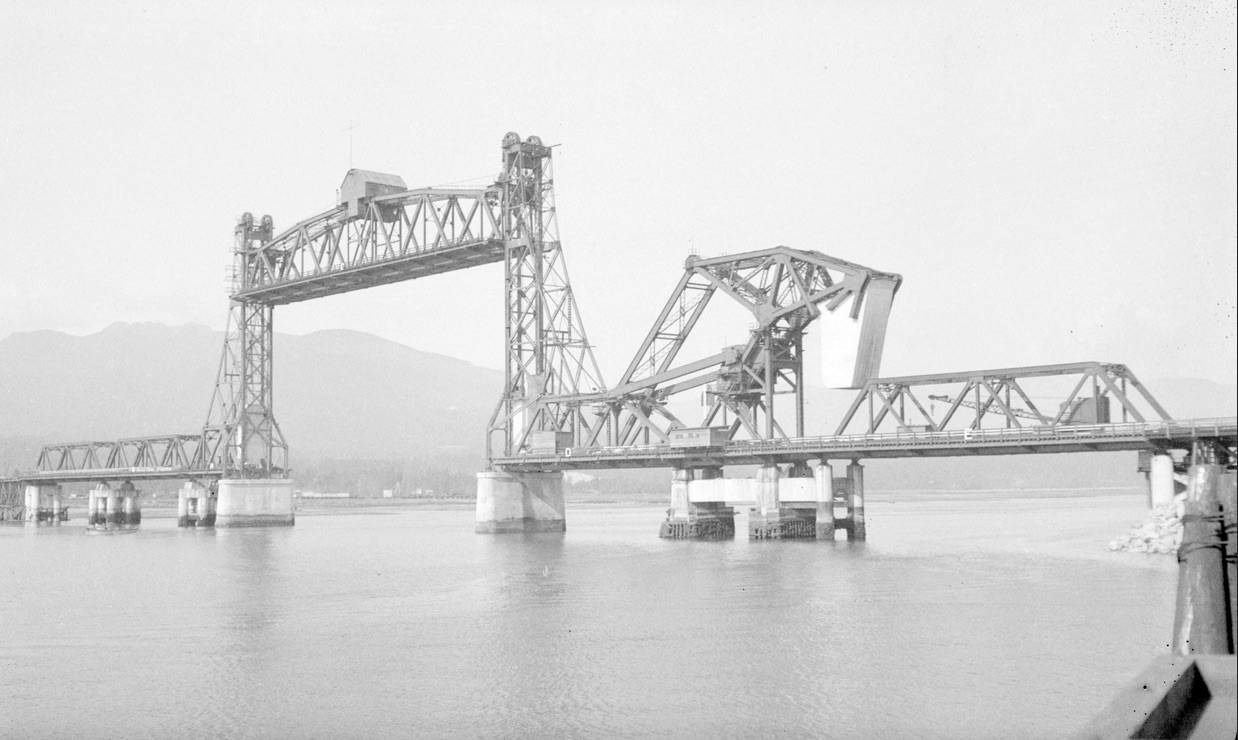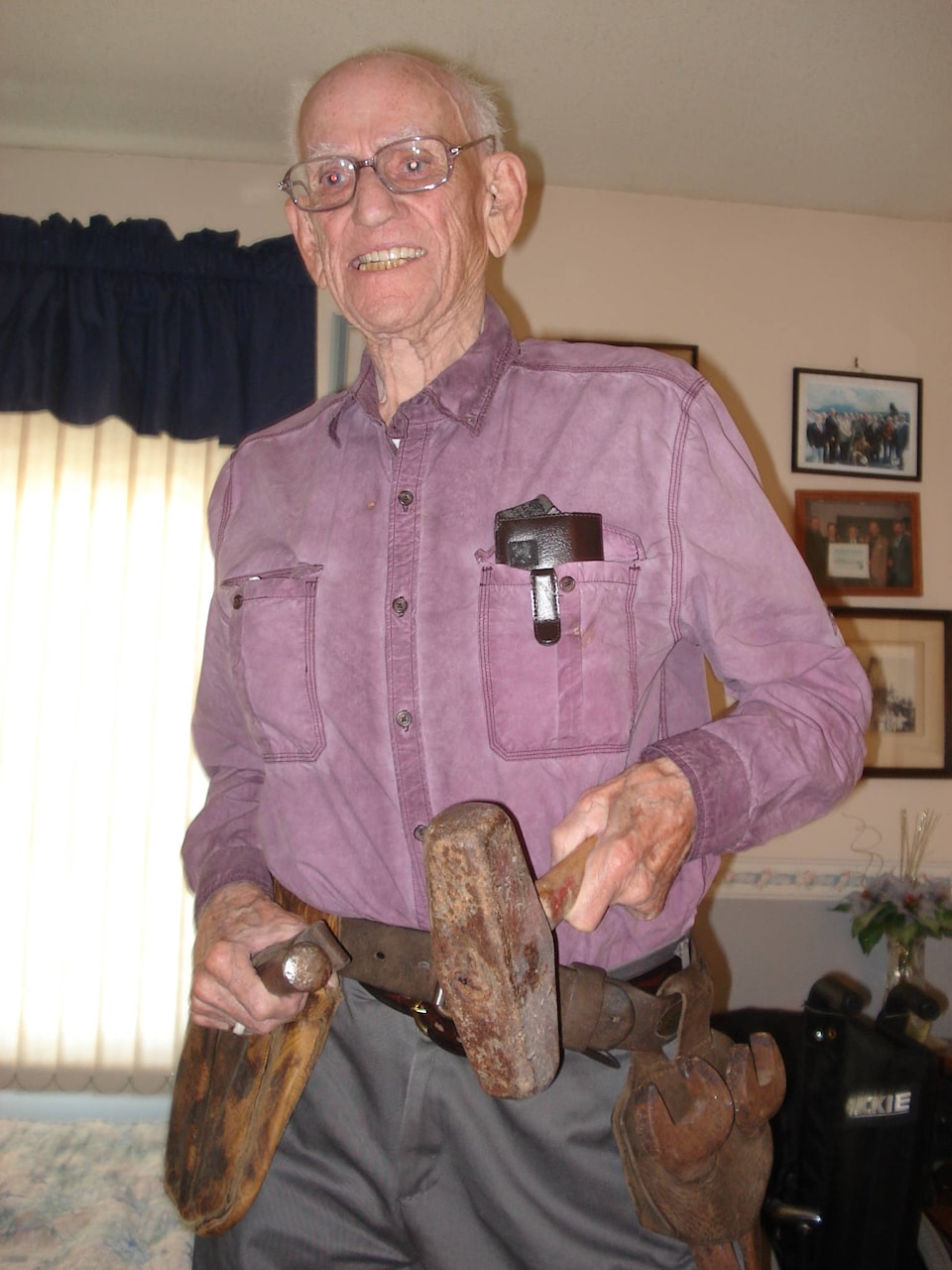By Eric Nelson
Kelowna resident Norm Atkinson did not go down with his ship in a six-year Canadian Navy destroyer hitch during the Second World War.
But 60 years ago last Sunday, the former ironworker did go down with Vancouver’s Second Narrows Bridge when it collapsed half-way through its construction.
Atkinson, who turned 98 May 2, plunged 70 feet into the dark waters of Burrard Inlet June 17, 1958, with little hope of ever surfacing to sunshine again. Of the 79 people working on the bridge that day, 18 died in the incident, making it the worst industrial accident in Vancouver’s history. Today he is one of only three remaining survivors.
The bridge was being pushed out mostly from the North Shore, and spanned half the inlet. But an engineering miscalculation caused the overloaded falsework or temporary pier supports to fail, as the bridge’s fifth-span sections were being lowered into place.
Atkinson was the signals man directing the crane operator with hand signals.
READ ALSO: STOMPIN’ TOM CONNORS AND THE SECOND NARROWS BRIDGE
“I was standing there giving signals. I stopped. And I was talking to the engineer. And I said, ‘Do you think we have any time left to put this in …? It weighs quite a bit. It weighs fifty tons ….’ And he replied, ‘Well just wait, Norm. I’ve got to check something else …’ ”
After a series of signals and delicate manoeuvres, that large form was landed and bolted secure. Then the second large or downstream piece of that section was loaded to bring it out on the crane/train. It stopped at the end and was dogged down, Norm explained, the operator waiting for the signals to lift and position the huge piece into place.
“But the inspector said, ‘We haven’t got time … ’ ”
Norm said he then turned around and held both arms up in a neutral position.
“And it was gone … My hands moved down. Now that means there’s nothing there. The crane’s gone. That’s gone, and it’s down below … and I went with it,” he said.
He remembered thinking he was not going to make it.
“I was in the water now, with the bridge. Up to my knees in sand …, and going down.” he said, remembering the falling girders trenching sand around him.
“ … Always under water when I was down there, alone, I would say 50 feet under water. It was a 100-foot drop, with all the bridge …. but I was too stung in the heart to stay down. I had to get up. I was fighting to get up. When I stopped battling, and letting my air out, slowly, I didn’t think I was going to make it. I got a little bit of light, my eyes were still open and stuff and crap (was floating around) and … ”
Recounting the story, Norm let his breath out with a gasp as if he were still living the experience. “I could hardly breathe.”
He kicked and struggled to the surface, where he grabbed a rope dangling from the crane and hung on. But the rapid, incoming tide kept spinning him in circles for half an hour. Finally he was rescued after being spotted by a fireman who had come to help, along with the RCMP, and was hauled into a rescue boat.
Norm’s ribs were cracked and crushed, and his shoulder and left leg injured by the crane when it went down with him. He spent three weeks in hospital. During that time a Dominion Bridge official visited him.
“He said, ‘You know Norm, you’re going to be the one to go back on the bridge to tell us which ones are bad … which legs, which pieces are bent …’ ”
Norm Atkinson did that, and returned to work full time in a supervisory capacity until the now Iron Workers’ Memorial Bridge was finished two years later, in 1960.
Only three ironworkers who survived the tragedy are still alive: Atkinson, foreman and friend Lou Lessard, of Langely, and 78-year-old ironworker apprentice Gary Poirier who at 18 had only been on the job for six months.
Relating the harrowing story Thursday with his wife Jackie at their comfortable Mission home, Norm’s voice thickened with emotion when he said he thought he owed it to his fellow workers to survive.
“I was too strong in my heart to stay down. I had to get up, out of that water and I had to save myself, and I did.
“I’d like to (believe in God), because He was there. Somebody was helping me. I don’t know who it was.”
When asked if he was a fighter, his wife Jackie said with a grin, “Oh yes, he is.”
To report a typo, email:
newstips@kelownacapnews.com.
@KelownaNewsKat
kmichaels@kelownacapnews.com
Like us on Facebook and follow us on Twitter.

